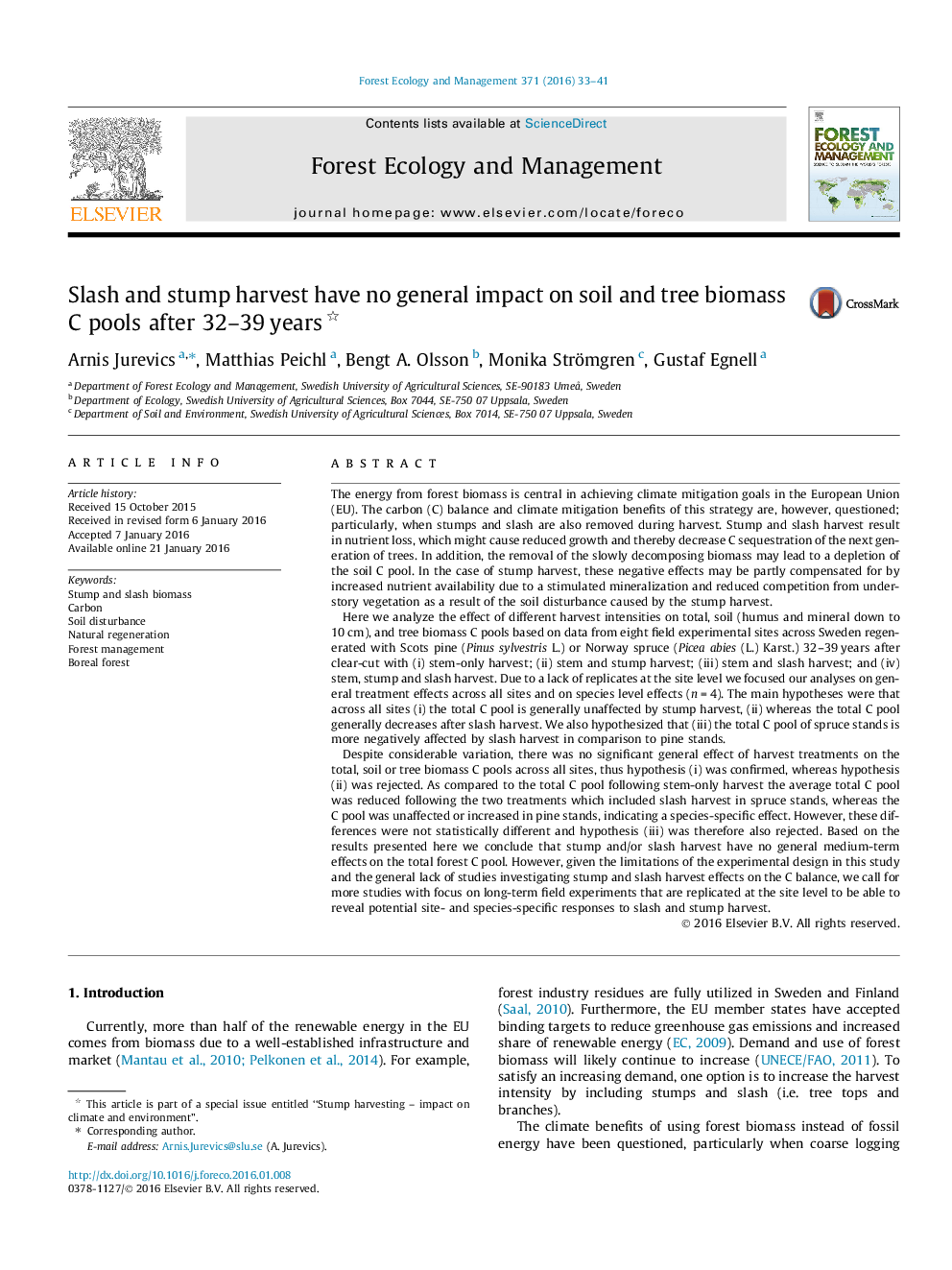| کد مقاله | کد نشریه | سال انتشار | مقاله انگلیسی | نسخه تمام متن |
|---|---|---|---|---|
| 85912 | 159149 | 2016 | 9 صفحه PDF | دانلود رایگان |
• Slash and/or stump harvest did not reveal general effects on tree or soil C pools after 32–39 years.
• Indications of decreased C pools in Norway spruce stands after slash harvest.
• Indications of increased C pools in Scots pine stands after stump and slash harvest.
The energy from forest biomass is central in achieving climate mitigation goals in the European Union (EU). The carbon (C) balance and climate mitigation benefits of this strategy are, however, questioned; particularly, when stumps and slash are also removed during harvest. Stump and slash harvest result in nutrient loss, which might cause reduced growth and thereby decrease C sequestration of the next generation of trees. In addition, the removal of the slowly decomposing biomass may lead to a depletion of the soil C pool. In the case of stump harvest, these negative effects may be partly compensated for by increased nutrient availability due to a stimulated mineralization and reduced competition from understory vegetation as a result of the soil disturbance caused by the stump harvest.Here we analyze the effect of different harvest intensities on total, soil (humus and mineral down to 10 cm), and tree biomass C pools based on data from eight field experimental sites across Sweden regenerated with Scots pine (Pinus sylvestris L.) or Norway spruce (Picea abies (L.) Karst.) 32–39 years after clear-cut with (i) stem-only harvest; (ii) stem and stump harvest; (iii) stem and slash harvest; and (iv) stem, stump and slash harvest. Due to a lack of replicates at the site level we focused our analyses on general treatment effects across all sites and on species level effects (n = 4). The main hypotheses were that across all sites (i) the total C pool is generally unaffected by stump harvest, (ii) whereas the total C pool generally decreases after slash harvest. We also hypothesized that (iii) the total C pool of spruce stands is more negatively affected by slash harvest in comparison to pine stands.Despite considerable variation, there was no significant general effect of harvest treatments on the total, soil or tree biomass C pools across all sites, thus hypothesis (i) was confirmed, whereas hypothesis (ii) was rejected. As compared to the total C pool following stem-only harvest the average total C pool was reduced following the two treatments which included slash harvest in spruce stands, whereas the C pool was unaffected or increased in pine stands, indicating a species-specific effect. However, these differences were not statistically different and hypothesis (iii) was therefore also rejected. Based on the results presented here we conclude that stump and/or slash harvest have no general medium-term effects on the total forest C pool. However, given the limitations of the experimental design in this study and the general lack of studies investigating stump and slash harvest effects on the C balance, we call for more studies with focus on long-term field experiments that are replicated at the site level to be able to reveal potential site- and species-specific responses to slash and stump harvest.
Journal: Forest Ecology and Management - Volume 371, 1 July 2016, Pages 33–41
